Discover houseplants that thrive indoors and dislike outdoor conditions. Explore our list of low-maintenance plants that are best kept inside to ensure they flourish year-round.
Are you looking for plants that will thrive in your home without needing outdoor time? Some plants actually prefer the stable conditions of indoor environments. In this guide, we’ll explore houseplants that are happiest when kept indoors year-round, making them perfect for apartment dwellers or those who prefer low-maintenance greenery.
Why Some Plants Prefer Indoor Life
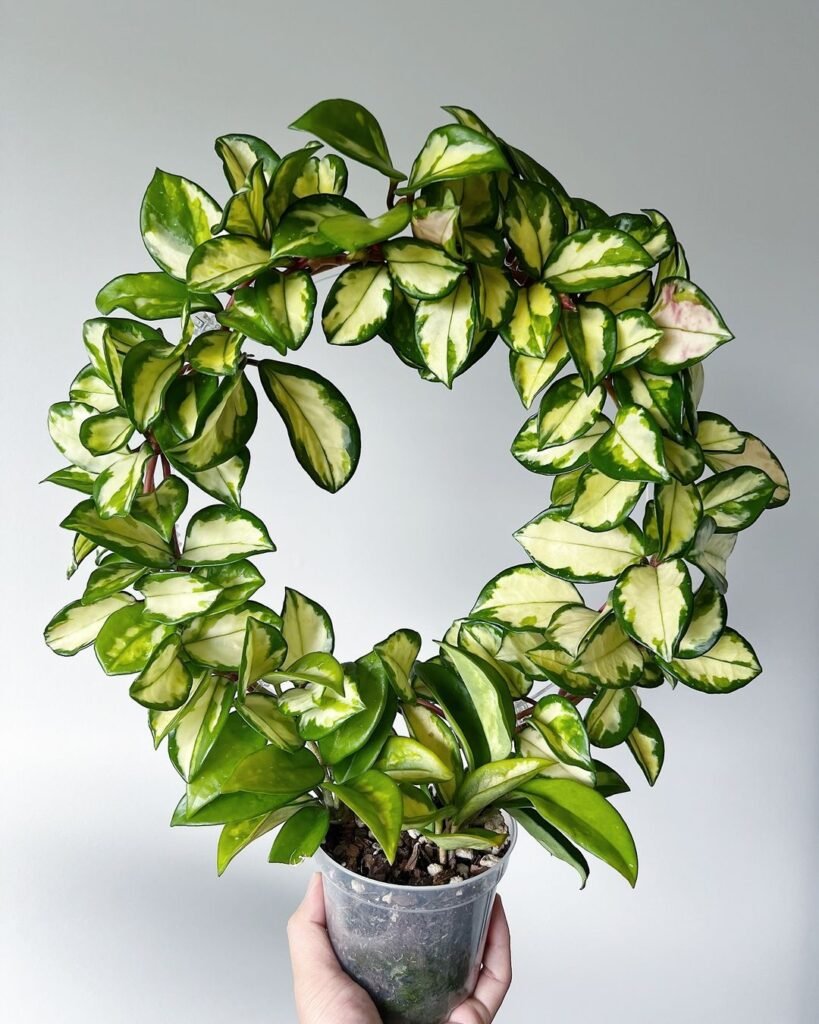
Before we dive into our list, let’s understand why some plants are better suited for indoor living:
- Controlled environment: Stable temperature and humidity levels
- Protection from extreme weather conditions
- Reduced risk of pests and diseases
- Consistent light conditions
- Less stress from environmental changes
1. Snake Plant (Sansevieria)
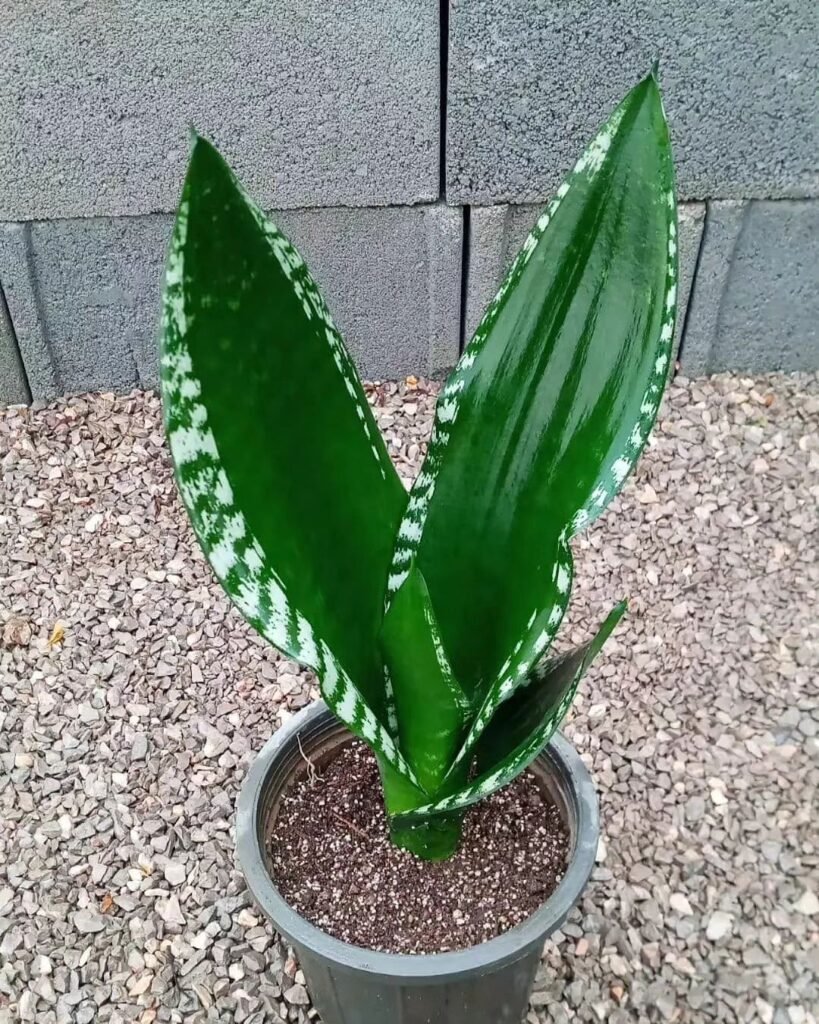
Here’s a clear and easy-to-read information chart for the Snake Plant (Sansevieria):
| Aspect | Details |
|---|---|
| Botanical Name | Sansevieria trifasciata |
| Common Name | Snake Plant, Mother-in-Law’s Tongue |
| Plant Zone | USDA Zones 9-11 (indoor in cooler zones) |
| Sun Exposure | Low to bright indirect light |
| Soil Type | Well-draining soil (cactus or succulent mix) |
| Watering | Water sparingly; allow soil to dry out between waterings |
| Growth Habit | Upright, rosette-forming with sword-shaped leaves |
| Height/Spread | 12-36 inches tall; spreads up to 12 inches |
| Special Features | Low-maintenance, air-purifying; tolerates neglect and drought |
Also known as Mother-in-Law’s Tongue, this plant is nearly indestructible.
Key features:
- Tolerates low light conditions
- Requires minimal watering
- Purifies air by removing toxins
Care tips:
- Water only when soil is completely dry
- Provide indirect light, but can tolerate low light
- Use well-draining soil
Learn more about snake plant care
2. ZZ Plant (Zamioculcas zamiifolia)

Here’s a straightforward information chart for the ZZ Plant (Zamioculcas zamiifolia):
| Aspect | Details |
|---|---|
| Botanical Name | Zamioculcas zamiifolia |
| Common Name | ZZ Plant |
| Plant Zone | USDA Zones 9-11 (indoor in cooler zones) |
| Sun Exposure | Low to bright indirect light |
| Soil Type | Well-draining soil (cactus or general potting mix) |
| Watering | Allow soil to dry out between waterings; water sparingly |
| Growth Habit | Upright, bushy with glossy, dark green leaves |
| Height/Spread | 2-3 feet tall; 1-2 feet wide |
| Special Features | Tolerates neglect, drought, and low light; air-purifying |
The ZZ plant is known for its ability to thrive in low-light conditions.
Key features:
- Extremely drought-tolerant
- Glossy, dark green leaves
- Slow-growing and low-maintenance
Care tips:
- Allow soil to dry completely between waterings
- Can tolerate low to bright indirect light
- Use well-draining potting mix
3. Chinese Evergreen (Aglaonema)
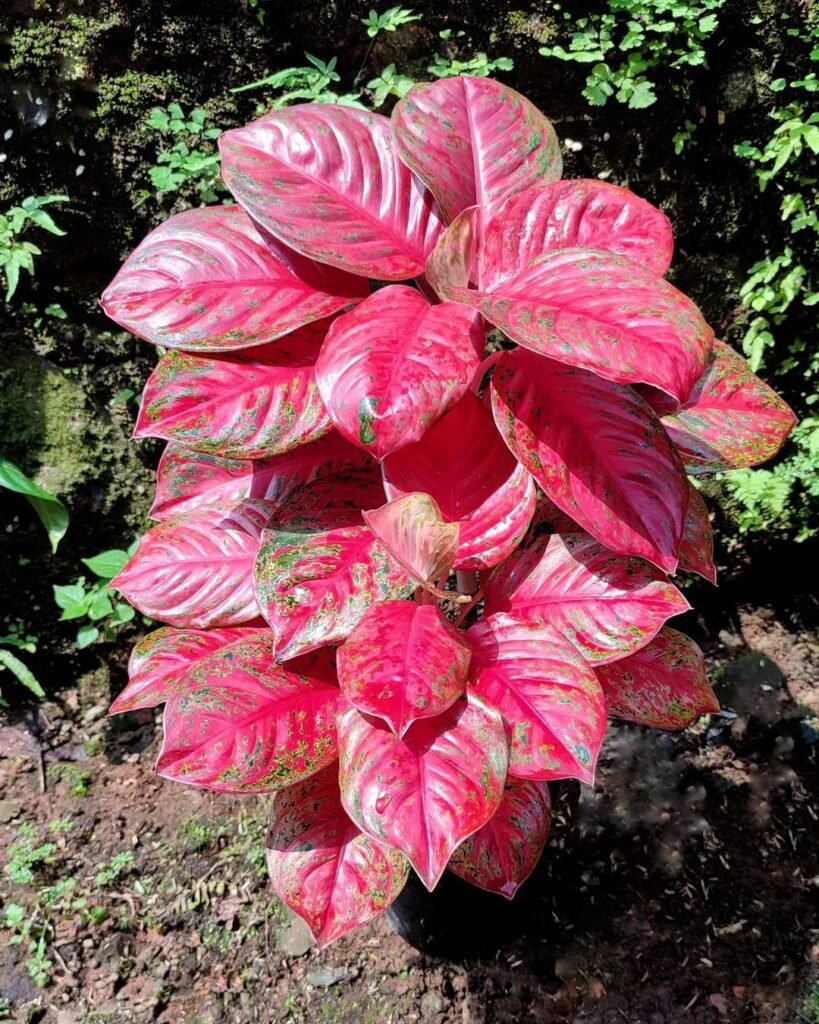
Here’s a clear and easy-to-understand information chart for the Chinese Evergreen (Aglaonema):
| Aspect | Details |
|---|---|
| Botanical Name | Aglaonema |
| Common Name | Chinese Evergreen |
| Plant Zone | USDA Zones 10-11 (indoor in cooler zones) |
| Sun Exposure | Low to bright indirect light |
| Soil Type | Well-draining potting mix |
| Watering | Keep soil consistently moist; allow top inch to dry between waterings |
| Growth Habit | Upright, bushy with large, glossy leaves |
| Height/Spread | 1-3 feet tall; 1-2 feet wide |
| Special Features | Low-maintenance; various leaf patterns and colors; air-purifying |
This plant is perfect for beginners and comes in various leaf patterns.
Key features:
- Tolerates low light and dry air
- Available in different colors and patterns
- Air-purifying qualities
Care tips:
- Keep soil lightly moist
- Prefers warm temperatures and humid conditions
- Avoid direct sunlight
Discover more about Chinese Evergreen varieties
4. Pothos (Epipremnum aureum)
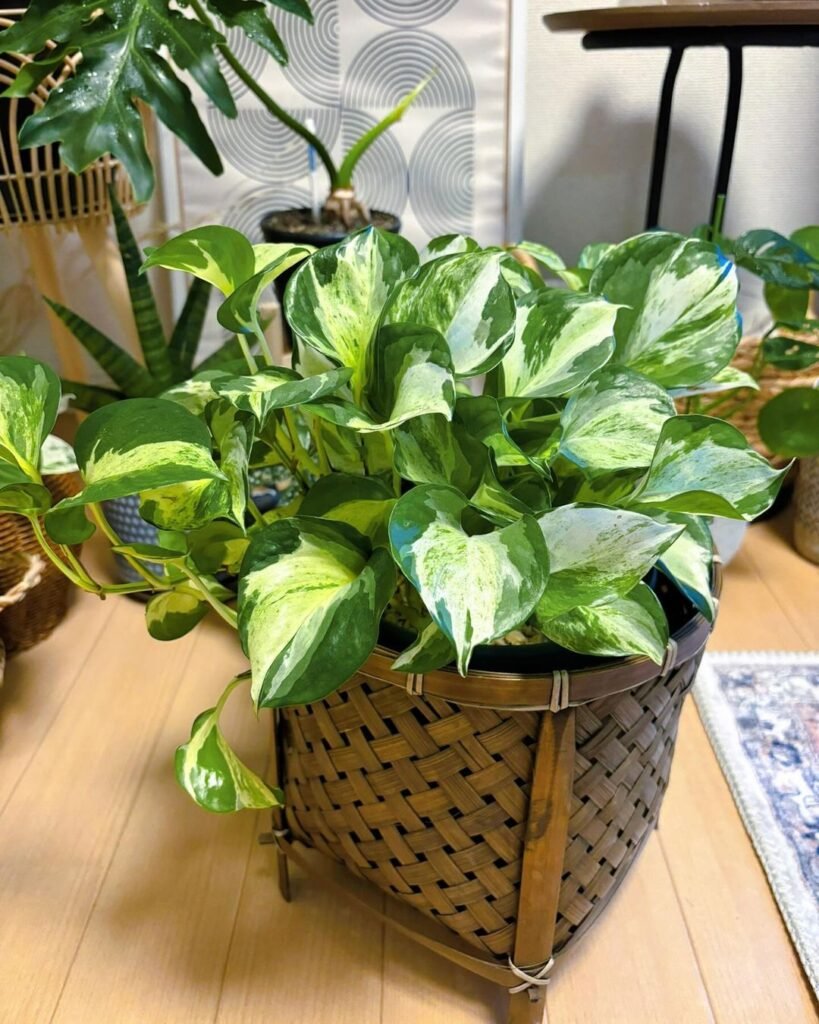
Here’s a comprehensive and easy-to-read information chart for Pothos (Epipremnum aureum):
| Aspect | Details |
|---|---|
| Botanical Name | Epipremnum aureum |
| Common Name | Pothos |
| Plant Zone | USDA Zones 10-11 (indoor in cooler zones) |
| Sun Exposure | Low to bright indirect light |
| Soil Type | Well-draining potting mix |
| Watering | Water when the top inch of soil is dry; avoid overwatering |
| Growth Habit | Trailing or climbing with heart-shaped leaves |
| Height/Spread | Vines can grow 6-10 feet long; spread depends on support |
| Special Features | Easy to care for; air-purifying; adaptable to various light conditions; can be grown in hanging baskets or as a climbing plant |
Also called Devil’s Ivy, this trailing plant is incredibly adaptable.
Key features:
- Fast-growing and easy to propagate
- Tolerates a wide range of light conditions
- Available in various leaf patterns
Care tips:
- Allow soil to dry between waterings
- Can thrive in low to bright indirect light
- Trim regularly to control growth
5. Spider Plant (Chlorophytum comosum)

Here’s an easy-to-read and verified information chart for the Spider Plant (Chlorophytum comosum):
| Aspect | Details |
|---|---|
| Botanical Name | Chlorophytum comosum |
| Common Name | Spider Plant |
| Plant Zone | USDA Zones 9-11 (indoor in cooler zones) |
| Sun Exposure | Bright, indirect light |
| Soil Type | Well-draining potting mix |
| Watering | Keep soil evenly moist; allow the top inch to dry between waterings |
| Growth Habit | Arching leaves with long, trailing offshoots or “babies” |
| Height/Spread | 12-24 inches tall; can spread up to 24 inches wide |
| Special Features | Low-maintenance; produces offshoots that can be propagated; air-purifying |
Known for its air-purifying abilities and unique appearance.
Key features:
- Produces baby plants (spiderettes) that are easy to propagate
- Tolerates a wide range of conditions
- Non-toxic to pets
Care tips:
- Keep soil lightly moist
- Prefers bright, indirect light but can tolerate lower light
- Feed occasionally during growing season
6. Peace Lily (Spathiphyllum)

Here’s a clear and verified information chart for the Peace Lily (Spathiphyllum):
| Aspect | Details |
|---|---|
| Botanical Name | Spathiphyllum |
| Common Name | Peace Lily |
| Plant Zone | USDA Zones 10-11 (indoor in cooler zones) |
| Sun Exposure | Low to bright indirect light |
| Soil Type | Well-draining potting mix |
| Watering | Keep soil consistently moist; water when the top inch feels dry |
| Growth Habit | Upright with broad, glossy leaves and elegant white blooms |
| Height/Spread | 1-3 feet tall; 1-2 feet wide |
| Special Features | Low-maintenance; produces striking white spathes and spadices; helps purify indoor air |
This elegant plant is known for its white flowers and glossy leaves.
Key features:
- Air-purifying qualities
- Tolerates low light conditions
- Indicates when it needs water by drooping
Care tips:
- Keep soil consistently moist but not waterlogged
- Prefers low to medium indirect light
- Mist leaves regularly to increase humidity
Read about the benefits of peace lilies
7. Dracaena
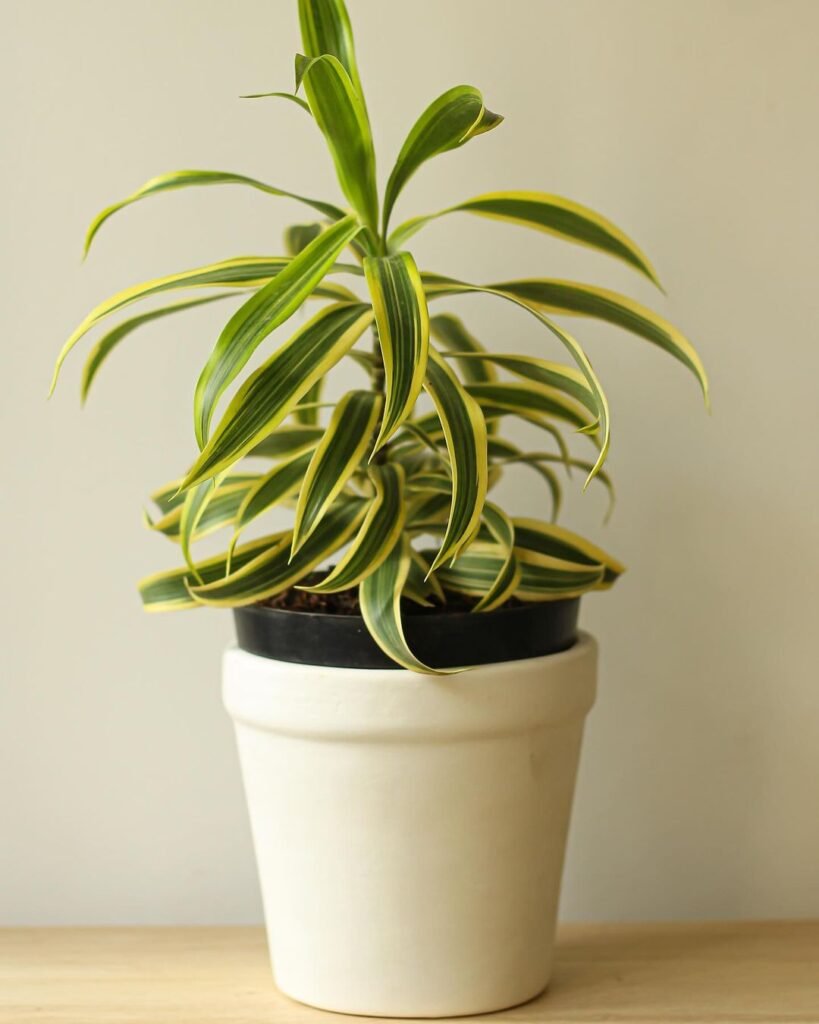
Here’s a concise and verified information chart for Dracaena:
| Aspect | Details |
|---|---|
| Botanical Name | Dracaena |
| Common Name | Dracaena |
| Plant Zone | USDA Zones 10-11 (indoor in cooler zones) |
| Sun Exposure | Low to bright indirect light |
| Soil Type | Well-draining potting mix |
| Watering | Allow the top inch of soil to dry between waterings; water sparingly |
| Growth Habit | Upright with long, narrow leaves; can form a tree-like shape |
| Height/Spread | 3-6 feet tall; 2-4 feet wide, depending on variety |
| Special Features | Low-maintenance; decorative foliage with varied colors and patterns; helps purify indoor air |
This genus includes many species that are excellent indoor plants.
Key features:
- Available in various sizes and leaf patterns
- Many species are drought-tolerant
- Some varieties can grow quite tall, making great floor plants
Care tips:
- Allow soil to dry slightly between waterings
- Prefers medium to bright indirect light
- Prune to control height and shape
8. Philodendron
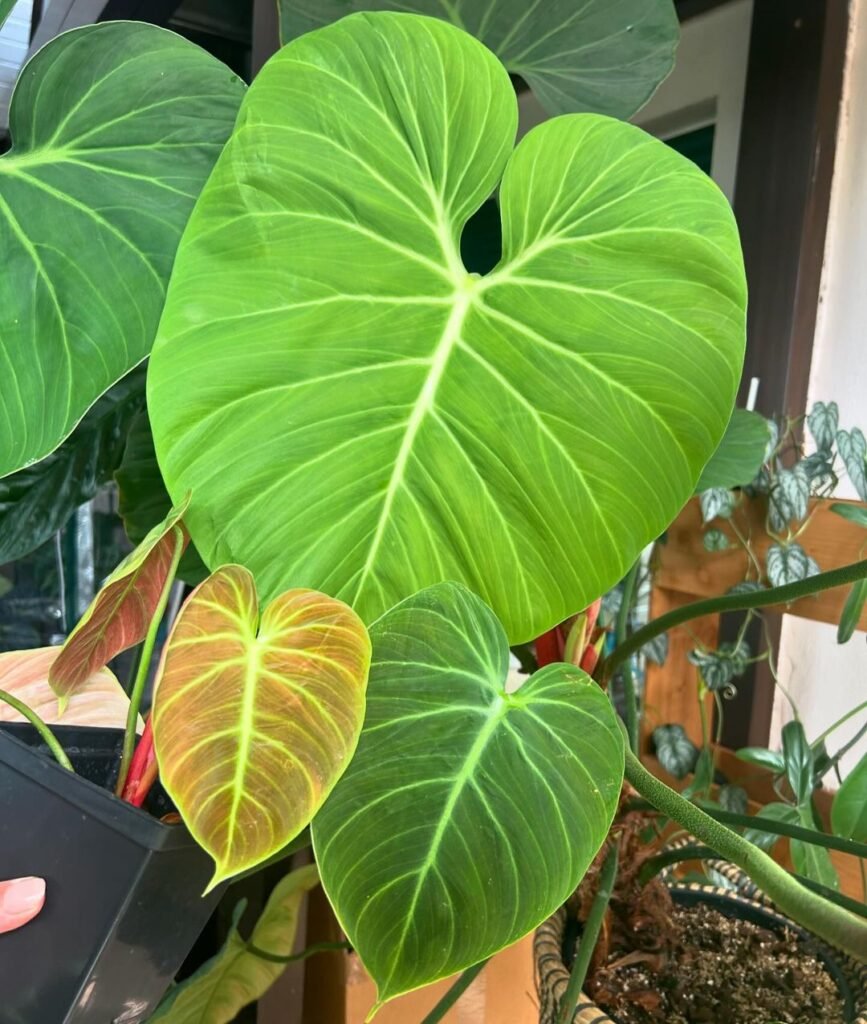
Here’s a detailed and verified information chart for Philodendron:
| Aspect | Details |
|---|---|
| Botanical Name | Philodendron |
| Common Name | Philodendron |
| Plant Zone | USDA Zones 9-11 (indoor in cooler zones) |
| Sun Exposure | Low to bright indirect light |
| Soil Type | Well-draining potting mix |
| Watering | Water when the top inch of soil is dry; avoid overwatering |
| Growth Habit | Vining or upright, depending on the variety; heart-shaped or deeply lobed leaves |
| Height/Spread | Vining types can grow 6-10 feet long; upright types can reach 2-3 feet tall |
| Special Features | Easy to care for; diverse leaf shapes and colors; air-purifying |
These plants come in climbing and non-climbing varieties.
Key features:
- Fast-growing and easy to care for
- Available in various leaf shapes and sizes
- Many species tolerate low light conditions
Care tips:
- Keep soil consistently moist but not waterlogged
- Prefers medium to bright indirect light
- Provide support for climbing varieties
9. Rubber Plant (Ficus elastica)
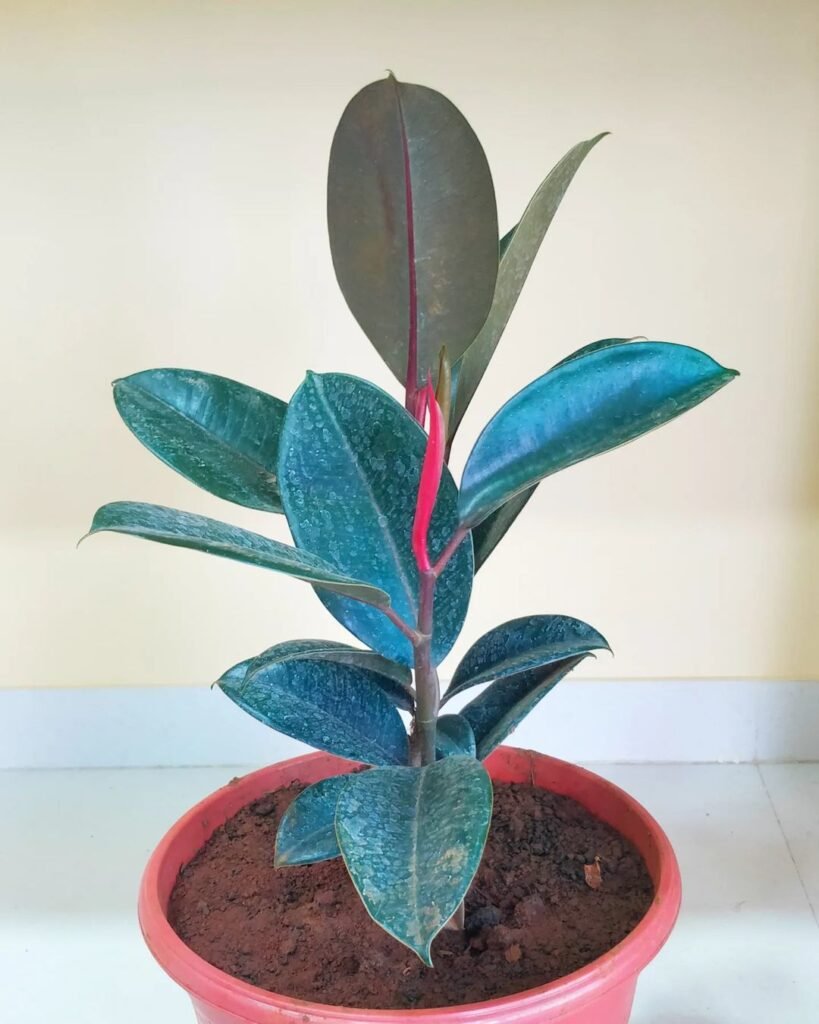
Here’s a straightforward and verified information chart for the Rubber Plant (Ficus elastica):
| Aspect | Details |
|---|---|
| Botanical Name | Ficus elastica |
| Common Name | Rubber Plant |
| Plant Zone | USDA Zones 10-11 (indoor in cooler zones) |
| Sun Exposure | Bright, indirect light |
| Soil Type | Well-draining potting mix |
| Watering | Allow the top inch of soil to dry between waterings; water thoroughly |
| Growth Habit | Upright with large, broad, glossy leaves |
| Height/Spread | 3-10 feet tall; 2-4 feet wide, depending on pot size |
| Special Features | Low-maintenance; can develop into a large indoor tree; attractive glossy leaves can vary from dark green to burgundy |
This plant can grow into a stunning indoor tree with proper care.
Key features:
- Large, glossy leaves
- Can be grown as a small indoor tree
- Air-purifying qualities
Care tips:
- Allow top inch of soil to dry between waterings
- Prefers bright, indirect light
- Wipe leaves occasionally to remove dust
10. Cast Iron Plant (Aspidistra elatior)
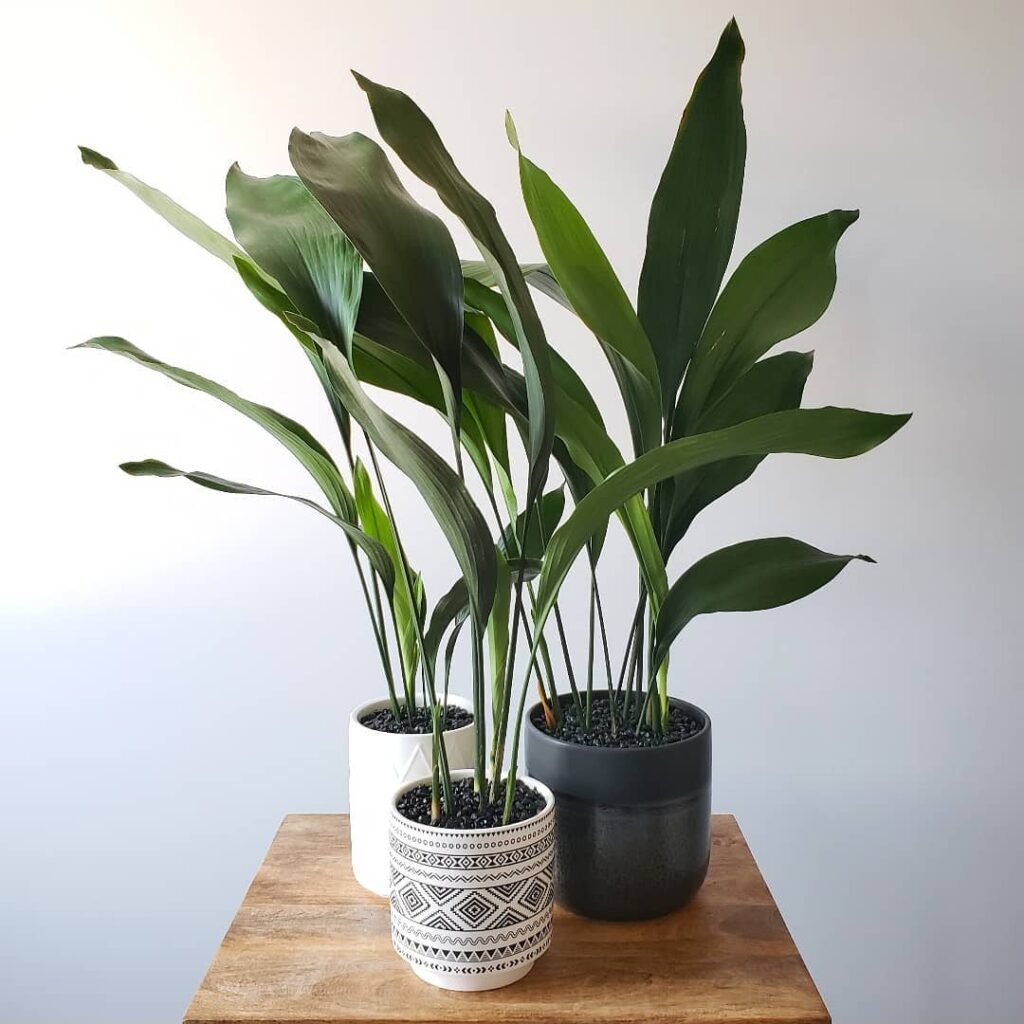
Here’s a clear and verified information chart for the Cast Iron Plant (Aspidistra elatior):
| Aspect | Details |
|---|---|
| Botanical Name | Aspidistra elatior |
| Common Name | Cast Iron Plant |
| Plant Zone | USDA Zones 6-11 (indoor in cooler zones) |
| Sun Exposure | Low to bright indirect light |
| Soil Type | Well-draining potting mix |
| Watering | Allow soil to dry out between waterings; water sparingly |
| Growth Habit | Upright with broad, leathery, dark green leaves |
| Height/Spread | 1-3 feet tall; 1-2 feet wide |
| Special Features | Extremely hardy; tolerant of neglect and low light; ideal for indoor environments |
True to its name, this plant is incredibly tough and adaptable.
Key features:
- Extremely tolerant of neglect
- Thrives in low light conditions
- Slow-growing and long-lived
Care tips:
- Allow soil to dry between waterings
- Can tolerate very low light conditions
- Rarely needs repotting
General Care Tips for Indoor Plants
- Proper Watering: Most indoor plants prefer to dry out slightly between waterings. Always check the soil before watering.
- Lighting: While many indoor plants tolerate low light, most prefer bright, indirect light. Avoid direct sunlight, which can scorch leaves.
- Humidity: Many indoor plants appreciate higher humidity. Consider using a pebble tray or humidifier.
- Fertilizing: Feed your plants during the growing season (spring and summer) with a balanced, water-soluble fertilizer.
- Cleaning: Dust leaves regularly to keep them healthy and attractive.
- Repotting: Most indoor plants need repotting every 1-2 years. Choose a pot that’s 1-2 inches larger in diameter.
Learn more about general indoor plant care
Troubleshooting Common Indoor Plant Problems
Even with the best care, indoor plants can sometimes face issues:
- Yellowing leaves: Often a sign of overwatering or poor drainage.
- Brown leaf tips: Usually indicates low humidity or over-fertilizing.
- Leggy growth: Typically means the plant needs more light.
- Wilting: Could be due to underwatering or overwatering.
- Pest infestations: Check regularly for signs of pests like spider mites or mealybugs.
If you notice any of these issues, adjust your care routine accordingly or consult with a local garden center for advice.
Indoor plants can bring life, color and improved air quality to your home without the need for outdoor exposure. By choosing plants that naturally prefer indoor conditions, you can enjoy thriving greenery with minimal fuss. Remember, even these low-maintenance plants need some care and attention to look their best. With a little love and the right conditions, these indoor-loving plants can flourish and beautify your space for years to come.
Do you have a favorite indoor plant that thrives in your home? Share your experiences and tips in the comments below!
Pingback: Madagascar Dragon Tree Care : A Guide to Growing and Maintai